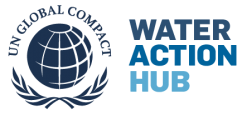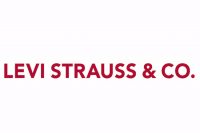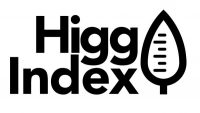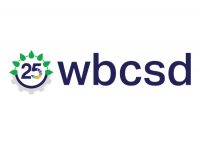Overview
WaterAid and H&M India undertook a three year project called ‘Workers Need Project’ (WNP). The WNP was implemented from July 15, 2014 through July 14, 2017 in three areas in Bangalore in collaboration with WaterAid’s local implementing partner Swami Vivekananda Youth Movement (SVYM).
The project arose out of an H&M assessment and interview of workers in their supply chain which revealed that many of the employees at H&M’s supplier factories live in areas without access to adequate water, sanitation and hygiene services and practice. To address this problem, H&M teamed up with WaterAid to demonstrate and train their suppliers’ employees about the importance of clean water and hygiene (WASH).
The project ran over three years and included 14 supplier factories and 15 schools where children of garment workers study, and offered improved infrastructure in the wider communities in which the workers live.
So far, they have reached over 12,000 workers with training and 3,000 students with improved water and toilet facilities. Over 2,000 households in the communities are now also practicing sustainable solid waste management thanks to the project.
Country(ies) where the intervention is taking place
India.
Lead Organization
WaterAid.
Who is involved?
H&M India, in collaboration with WaterAid’s local implementing partner Swami Vivekananda Youth Movement (SVYM).
Objectives
The overall aim of the project is to improve the health and living conditions of textile workers, mainly those working in factories supplying to H&M, by delivering sustainable water, sanitation and hygiene (WASH) services and practices. The factory workers are mainly between 20 and 40 years old with a majority being women. The project has three specific objectives:
Result 1: To reach 12,000 garment factory workers in 14 factories at work with education to bring about sustained behavioral change and create awareness.
Result 2: To reach 5 schools per area, in total 15, with approximately 300 students per school, with water and sanitation facilities and appropriate education to bring about sustained behaviour change in WASH and waste management.
Result 3: To reach communities where workers live with water and sanitation facilities and appropriate information to create awareness on WASH and waste management.
Target markets
Apparel.
Workplace Setting
Factory
Scope of intervention
Suppliers, communities, schools.
Which elements of WASH are covered?
Safe water, sanitation, hygiene, behavioral change, Menstrual Health Management (MHM)
Which elements of the Framework for Business Action on WASH are covered?
Taking action, understand the issue, assessing and prioritizing.
Methodology and tools that have been developed or are planned
To achieve result 1, WaterAid has been using the following approach:
At inception, H&M facilitated a kick-off launch enabling project stakeholders to meet and begin to build relationships. In addition to this, H&M organised introductory meetings with the management for some of the factories where WaterAid and SVYM presented the project, approach and expectations as well as started to sensitise the management on WASH.
SVYM and WaterAid developed a training curriculum as well as an interactive educational kit to be used in factories. The curriculum was agreed with the management of each factory, together with a training plan. During the project, the curriculum was revised from 9 training modules to 5, without compromising on any key issues.
Trainers (Resource Persons) were selected among the workers in each factory. The Resource Persons were selected by the management based on specific criteria, including prior training experience and good communication skills. Each Resource Person received a two-day Training of Trainers course covering water, sanitation, hygiene and Menstrual Health Management (MHM).
Trainings, led by the trained Resource Person with the support of SVYM, are conducted at the factory premises during working hours. The trainings are mandatory but may be rescheduled if staff critically needed in the production. The training material consists of PPTs, videos and images. The educational kits, including hygiene songs and games, clip arts and posters are also used during trainings.
Apart from trainings, awareness is raised through Information, Education and Communication (IEC) materials displayed on site as well as professionally performed plays (so-called skits) undertaken in the factory premises. The plays highlight the importance of practicing WASH.
All activities at factory levels are designed in such a way to ensure that WASH trainings continue even after the project has ended. Through sensitising factory management, training workers as trainers and developing a general WASH training plan the factories are well placed to continue the training efforts.
In addition to the trainings, WaterAid and SVYM have successfully been working directly with the factory management to also audit and improve the WASH situation in the factories.
Outcomes
Over the last two years, over 12,000 factory workers have received training in WASH, whereof 7,188 have completed the full training cycle.
When the original baseline survey was conducted at inception, findings included inadequate facilities for menstrual hygiene management; poor toilet maintenance; lack of awareness about key hygiene practices, including hand-washing with soap.
Now, factory management has taken some measures to ensure better upkeep of toilets, which they believe will have a direct impact on the workers’ health. More specifically, all the factories now ensure that toilets are equipped with water, soap, towels and bins to dispose sanitary pads.
Management in several factories have also planned to continue the training modules as part of their ongoing general induction program for new employees and will commit to having trainings available on WASH, and regular monitoring of WASh facilities.
The midterm evaluation also found that there has been a positive change in workers’ attitudes towards and practices related to WASH. After these WASH interventions, factory management perceives that daily attendance has improved. It reduces absenteeism and increases the production.
Challenges
During peak production periods, where there are concerns around productivity and performance. Factories will need to prioritize the activities and also adjust the training set-up is adjusted to realities on the ground.
Factory management will have to prioritize spending to enable adequate maintenance of WASH facilities, from regular toilet cleaning, soaps, monitoring of clean water, etc. Though they understand the importance, they still face budgetary constraints that may impact long term outcomes.
The project team believes that in order to achieve best results, interventions in factories need to be complemented with activities and training at the community level as well. However, for such a holistic approach the project would need to map where the workers actually live, a fairly major challenge given workers are often scattered over a large area, thereby greatly expanding the scope and budget of the project.
A few challenges remain including a language barrier, where some training materials were not available in all the languages spoken by the workers (many of whom are migrant laborers). Trainers also faced a literacy barrier (where many workers don’t know how to read and write).
As for measuring impact of the project on a factory level, it is very complex to isolate the contribution of WASH to changes in e.g. number of sick days, turnover rate, efficiency, productivity, and so on. Even the general health impacts on the workers are hard to measure due to the general high turnover rate. However, there has been a common perception among workers and managers that improved WASH awareness and practices influence health and productivity.
Successes
The trainings have been much appreciated by the workers. Most information was new to them and well-received. The interest among the workers has been a critical success factor for the project.
Contact
Ruth Romer (RuthRomer@wateraid.org)







